Sierra Nevada wilderness meadow restoration conserves water for Californians
American Rivers California headwaters team is working hard to restore meadows in the Sierra Nevada. Since 2012, we have completed restoration projects on approximately 730 meadow acres and led 16 projects in 11 watersheds across the Sierra.
Meadows play an integral part in the Sierra hydrologic system, which provides more than 60% of California’s developed water supply. Healthy meadows provide a suite of benefits including improved groundwater storage, enhanced water quality, reduced peak flood flows, and critical habitat. It’s estimated that 50% of Sierra meadows are degraded by human impacts, resulting in the loss of these benefits. Momentum around meadow restoration has been growing as legislators, land managers, and the public have recognized the benefits meadows have the potential to provide. In 2014, the Governor prioritized mountain meadows in the California Water Action Plan, as a means to increase groundwater storage and habitat. This, in turn, has fueled federal agencies, local governments, conservation organizations, tribes, and others to take action.
American Rivers California headwaters team is working hard to restore meadows in the Sierra Nevada. Since 2012, we have completed restoration projects on approximately 730 meadow acres and led 16 projects in 11 watersheds across the Sierra. We also published a journal article presenting the effects of restoration on groundwater and streamflow in a recently restored Sierra meadow and have been co-leading a Sierra-wide partnership focused on increasing the pace, scale and efficacy of meadow restoration.
Currently we are partnering with Sequoia and Kings Canyon National Parks (SEKI) to build momentum around meadow restoration in designated wilderness. Wilderness is federally designated in National Parks, National Forest, and Bureau of Land Management (BLM) land. It covers over 15% of the Sierra Nevada and is
“for the use and enjoyment of the American people in such manner as will leave them unimpaired for future use and enjoyment as wilderness, and so as to provide for the protection of these areas, the preservation of their wilderness character…”
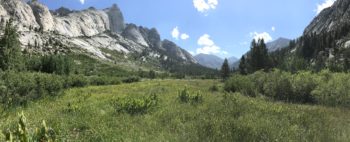
Castle Domes Meadow | Photo by Maiya Greenwood
The heart and soul of wilderness is maintained by strict rules included in the Wilderness Act of 1964, among which are: no permanent or temporary roads, no motor vehicles, no motorized equipment, no motorboats, no landing of aircraft, no other form of mechanical transport, and no structures or installations. The wilderness designation often comes with the misconception that wilderness is inherently pristine, however, these areas were subjected to human influence and degradation in the hundreds of years prior to their designation. For example, although currently protected, many Sierra meadows were subject to a century of overgrazing following the Gold Rush. The meadows in present-day wilderness often exhibit similar degradation as meadows outside of wilderness areas. To date, the majority of meadow restoration projects completed in the Sierra have used techniques that require motorized vehicles and large machinery to move soil and rock. However, these techniques are not directly transferable to wilderness meadows due to the disallowance of motorized vehicles.
This presents a conundrum; people broke the meadows, but the wilderness designation makes it very difficult for us to fix them.
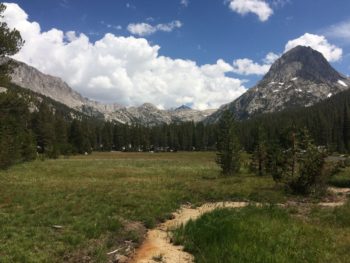
Colby Meadow | Photo by Maiya Greenwood
So, how can we tackle this problem? American Rivers is partnering with Sequoia and Kings Canyon (SEKI) National Park, which is comprised of 93% wilderness. Our project is aimed to address the wilderness restoration conundrum by determining 1) which wilderness meadows are degraded, and 2) what restoration techniques both effectively address meadow degradation and maintain ‘wilderness character’. We addressed the first question by completing a field assessment of 60 wilderness meadows using the Meadow Condition Scorecard, a tool American Rivers developed in partnership with the Forest Service, UC Davis, and others to rapidly evaluate meadow condition and restoration potential. We are currently addressing the second question by completing a restoration project to pilot wilderness friendly techniques at Log Meadow in Sequoia National Park. This meadow is accessible, and outside of designated wilderness. We are piloting these techniques at a non-wilderness meadow so that we can test logistics and efficacy of techniques prior to applying them in remote wilderness areas with more complicated and costly logistics.
The lessons learned at Log meadow, in conjunction with the completed meadow assessments, will lay the groundwork for extensive restoration and protection of degraded wilderness meadows throughout Sequoia and Kings Canyon National Parks. We hope to scale up this approach and inform wilderness meadow restoration efforts in National Parks, National Forests and BLM land across the Sierra Nevada region.
Thanks to our funders: the California Department of Fish and Wildlife and the National Fish and Wildlife Foundation who are supporting this important work.
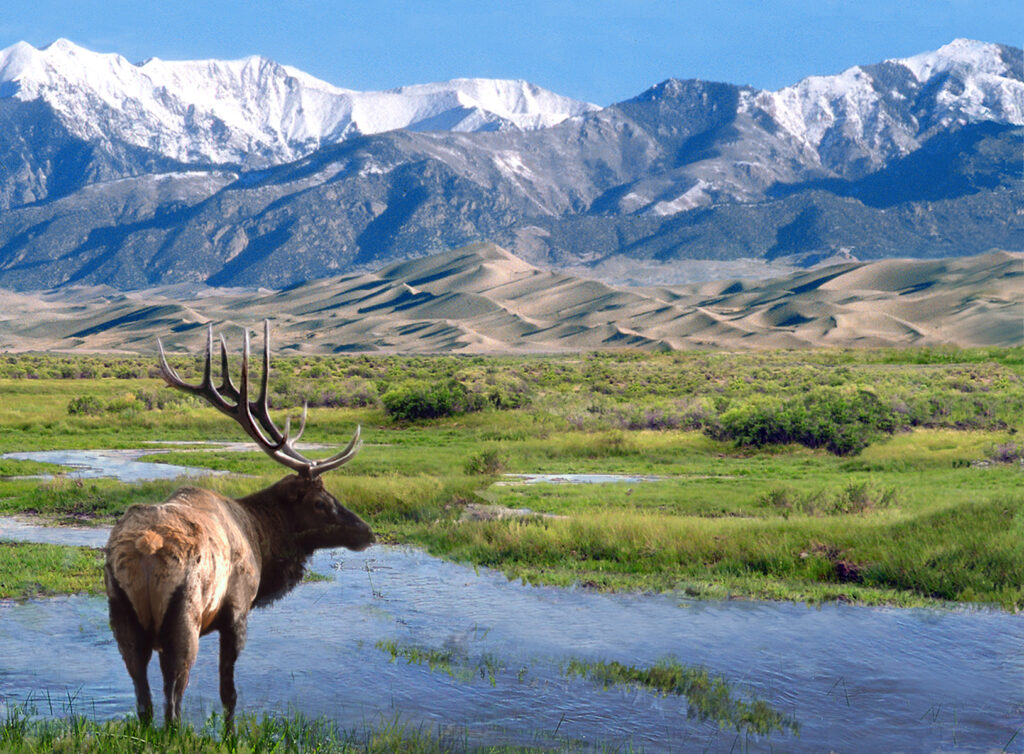
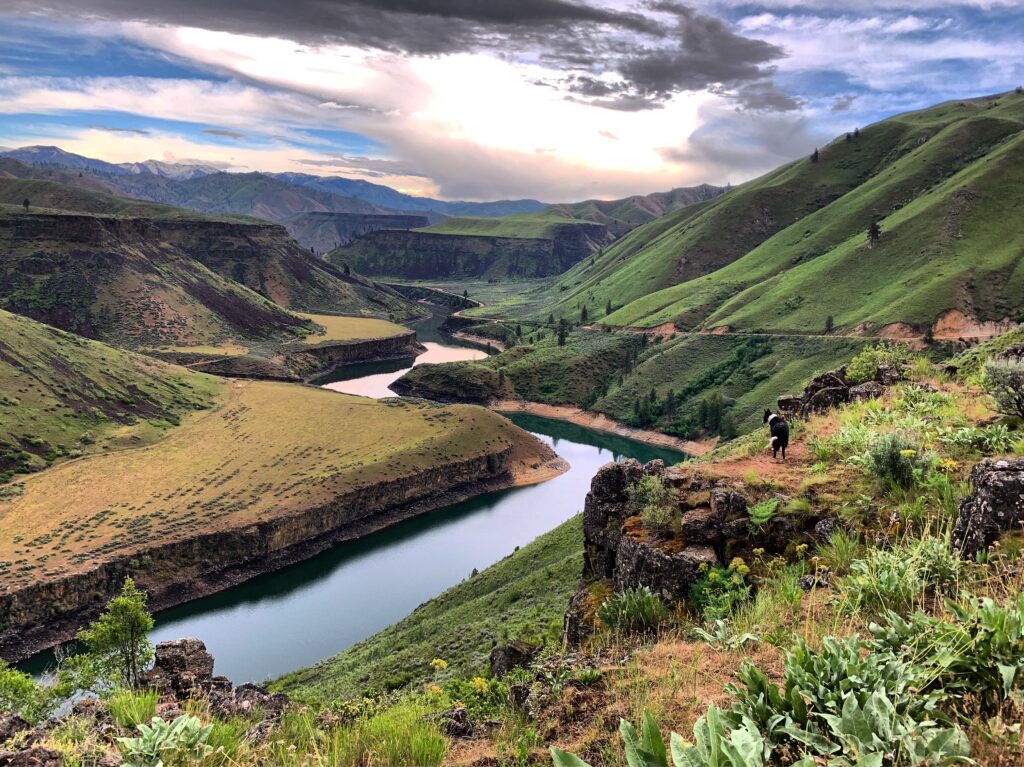
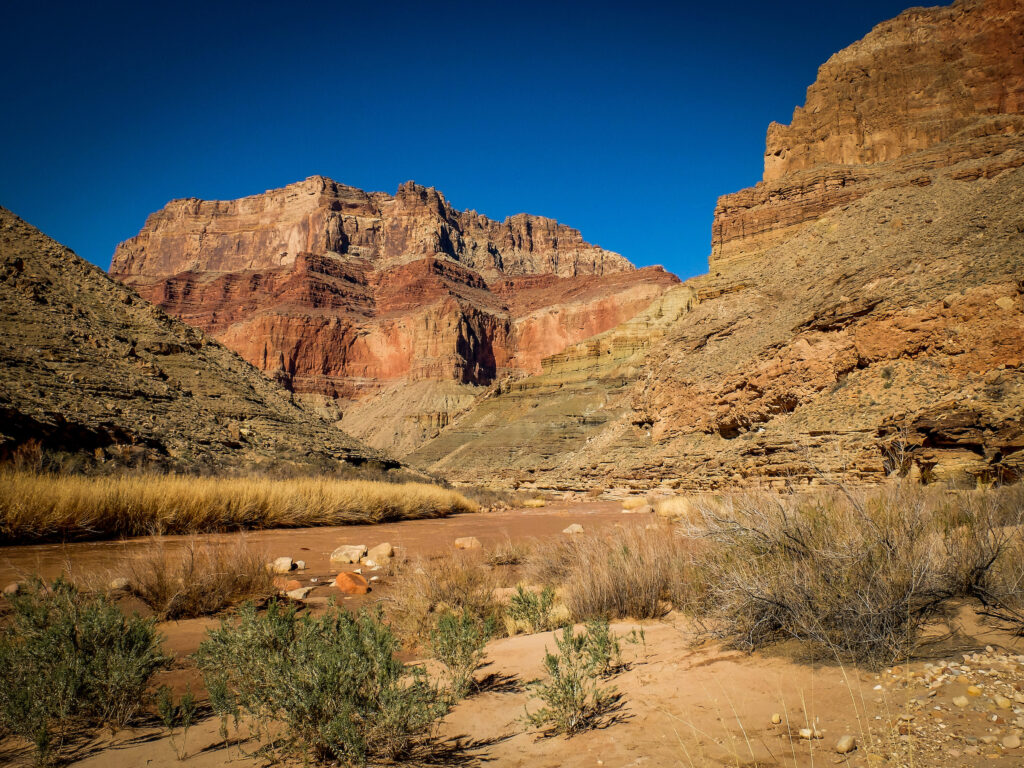
2 responses to “Sierra Nevada wilderness meadow restoration conserves water for Californians”
I enjoy reading about attempts to restore our wild places. It gives me hope for the future. I would like to suggest
Adding beavers to the tool chest. They can do in a few years
What may take hundreds of thousands of dollars to do with bulldozers and backhoes.
Please read Eager; The Secret Life of Beavers and Why
They Matter. By Ben Goldfarb
I would love to volunteer to help with one of these restoration projects. I have spent a lot of time in the Sierras backpacking over the past five decades. I saw the damage people and climate change have done first-hand two summers ago when one of my favorite lakes was gone due to glacier loss and the trails were damaged from over-use.